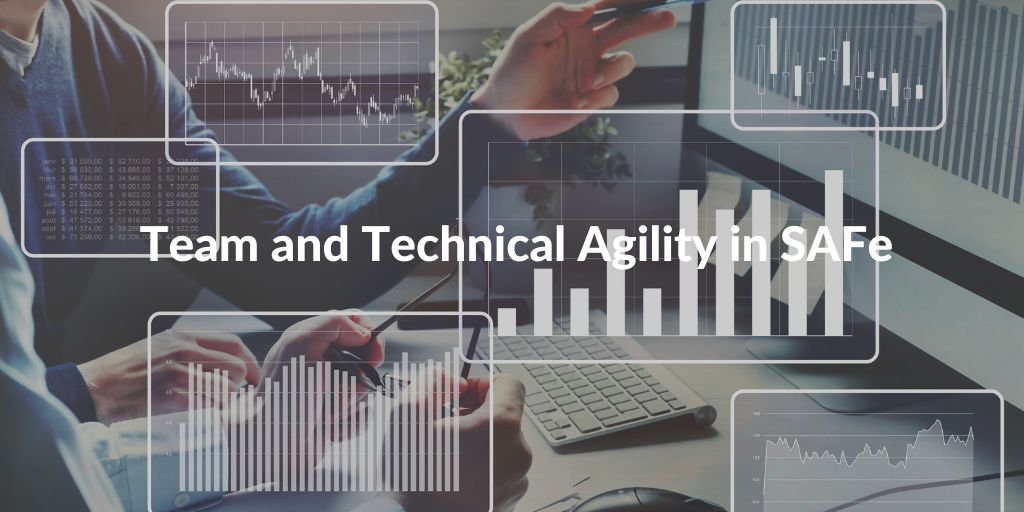Categories
Tags
Newsletter
Subscribe to the QRP International neswletter and get all the news on trends, useful contents and invitations to our upcoming events
Subscribe
Scaled Agile Framework (SAFe) provides a comprehensive approach to implementing agile principles and practices at scale. SAFe is based on seven core competences: in this article we will explore Team and Technical Agility.
The Scaled Agile Framework is a body of knowledge that includes structured guidance on values, planning and management, roles and responsibilities. The Scaled Agile Framework is built around the seven core competencies of the Lean Enterprise. In this article, we will discuss one core competence: Team and Technical Agility.
The Team and Technical Agility competence describes the core competencies, principles and Lean-Agile practices that Agile and Agile teams use to create high-quality solutions for their customers.
An organisation’s success in the digital age depends entirely on the ability of its teams to deliver solutions that reliably meet customer needs. Technical and team agility competence is the real cornerstone of Business Agility.
This competence consists of three dimensions:
Agile Teams – Cross-functional, high-performance teams strengthen their competencies by applying effective Agile principles and practices.
Teams of Agile Teams – Agile teams operate in the context of a SAFe Agile Release Train (ART), a group of long-standing Agile teams that provide a shared vision and direction and are responsible for delivering the solution outcomes.
Built-in Quality – All Agile teams apply the defined Agile practices to create high-quality, well-designed solutions that support current and future business needs.
In the Scaled Agile Framework (SAFe), Agile teams play a key role in the development of software systems. SAFe is designed to help organisations scale Agile principles and practices to larger and more complex projects, and Agile teams are a key component of this approach.
Agile teams are responsible for planning, executing and delivering product functionality and enhancements, with the goal of meeting customer needs in a timely manner. The teams work by following Agile best practices such as Scrum, Kanban and XP (Extreme Programming), and are constantly in contact with the Product Owner to ensure that the product developed is aligned to the needs of the business.
Team agility refers to a team’s ability to respond quickly and effectively to project changes. These can be changes to the scope of the project, changes to the composition of the team. To be agile, a team must be able to adapt to these changes with minimal change to the project schedule or budget.
Creating enterprise-wide solutions generally requires a breadth and depth of expertise beyond what a single Agile team can provide. For this reason, several agile teams must collaborate with each other.
An agile team is a group of people working together to develop, deliver and support a product or service. Agile teams are cross-functional and self-organising.
Agile teams are characterised by a number of key practices, including:
Not one team alone has the capacity to build and deliver large systems in reasonable time.Therefore, multiple Agile teams must collaborate.
In the Scaled Agile Framework (SAFe), Built-In Quality is a core value that underpins the development of high-quality software systems. The concept of Built-In Quality is based on the premise that quality should be incorporated into the software development process from the very beginning, rather than being added at a later stage or through testing and rework.
The SAFe framework defines Built-In Quality as ‘the collective responsibility of all teams involved in defining, creating and delivering the solution to continuously improve quality by embedding it throughout the development process’. This means that everyone involved in the development process, including developers, testers, product owners and stakeholders, has a responsibility to ensure that quality is built into the software from the start.
Integrated quality in SAFe is based on four fundamental pillars:
In conclusion, Built-In Quality is a key aspect of the SAFe framework and is fundamental to the development of high-quality software systems. By focusing on flow, architecture and design quality, code quality and test quality, teams can ensure that quality is built into the software development process from the very beginning, resulting in more efficient development, faster time-to-market and higher customer satisfaction.
Technical and team agility is critical to the success of organisations in today’s digital age.
Team agility is achieved through the implementation of agile practices such as Scrum, Kanban and Extreme Programming (XP), while technical agility is achieved through the implementation of Built-In Quality, DevOps and Continuous Delivery practices. These practices help organisations quickly and reliably deliver high quality software solutions and respond promptly to changes in business requirements, customer needs and market conditions. Together, team agility and technical agility are essential for organisations to succeed in today’s digital age, and SAFe provides a comprehensive approach to implementing these principles at scale.